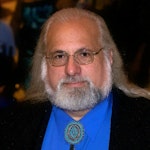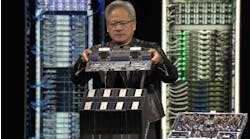UEC Is Coming: New, High Performance Data Center Ethernet Standard Is On Horizon
Last week, the announcement was made of the formation of the Ultra Ethernet Consortium (UEC), a Joint Development Foundation project hosted by The Linux Foundation.
If you’re asking yourself why we need more Ethernet standards, the group states that they plan “to deliver on Ethernet-based open, interoperable, high-performance full-communications stack architecture to meet the growing network demands of AI & HPC at scale.”
The consortium's founding members are AMD, Arista, Broadcom, Cisco, Eviden, HPE, Intel, Meta and Microsoft, each bringing their own expertise and experience in delivering networking, AI, cloud, and large-scale high-performance computing.
This union of key industry players aims to construct a next generation Ethernet-based communication stack architecture geared towards high-performance networking.
Ethernet for managing diverse workloads
The surge in AI and High-Performance Computing (HPC) workloads has triggered a need for superior functionality, performance, interoperability, and reasonable total cost of ownership.
The UEC's Ethernet solution stack aims to leverage Ethernet's widespread use and flexibility for managing a diverse range of workloads in a cost-effective and scalable way.
A focus will be on maintaining and promoting Ethernet interoperability while minimizing changes to the communication stack.
In comments on the announcement, Dr. J Metz, Chair of the Ultra Ethernet Consortium, points out that the focus isn't on reinventing Ethernet, but refining it for specific performance-driven workloads, looking to boost efficiency and performance at scale by scrutinizing and optimizing every layer - from the physical through the software.
AI/ML transformation hinges on networks
When asked why this type of development was necessary, Rakesh Chopra, Cisco Fellow, Common Hardware Group, Cisco, stated, “We are at the start of a massive transformation in nearly every industry. AI/ML will fundamentally change what, when and how we do everything. To enable this transformation, the industry needs to evolve in how the networks of tomorrow are built.”
The most prominent factor in that transformation is clearly AI, and changes to support common use of generative AI “will require us to architect our networks for supercomputing scale and performance," according to Justin Hotard, executive vice president and general manager, HPC & AI, at Hewlett Packard Enterprise.
Hotard continued, "The importance of the Ultra Ethernet Consortium is to develop an open, scalable, and cost-effective Ethernet-based communication stack that can support these high-performance workloads to run efficiently. The ubiquity and interoperability of Ethernet will provide customers with choice, and the performance to handle a variety of data intensive workloads, including simulations, and the training and tuning of AI models."
Eric Eppe, Group VP, HPC/AI/Quantum Portfolio & Strategy for Eviden at Atos Group, also highlighted the importance of a standard driven model for high performance interconnection not solely with AI, but with all aspects of high performance computing. And that a focus on interoperability, cost-effectiveness, and high performance was critical to the success of these standards.
UEC technical objectives
The technical objectives for the consortium include the development of specifications, APIs, and source code to outline:
- Ethernet communications protocols, electrical and optical signaling characteristics, application program interfaces, and/or data structures.
- Link-level and end-to-end network transport protocols to extend or replace current protocols.
- Link-level and end-to-end congestion, telemetry and signaling mechanisms suitable for AI, machine learning and high-performance computing environments.
- Software, storage, management, and security frameworks to facilitate diverse workloads and operating environments.
The consortium will follow a methodical strategy with interoperable, compatible, modular layers and close integration to achieve an overall improvement for demanding workloads.
The founding members have already made valuable contributions in four key areas: Physical Layer, Link Layer, Transport Layer and Software Layer. Further details are available at www.ultraethernet.org.






